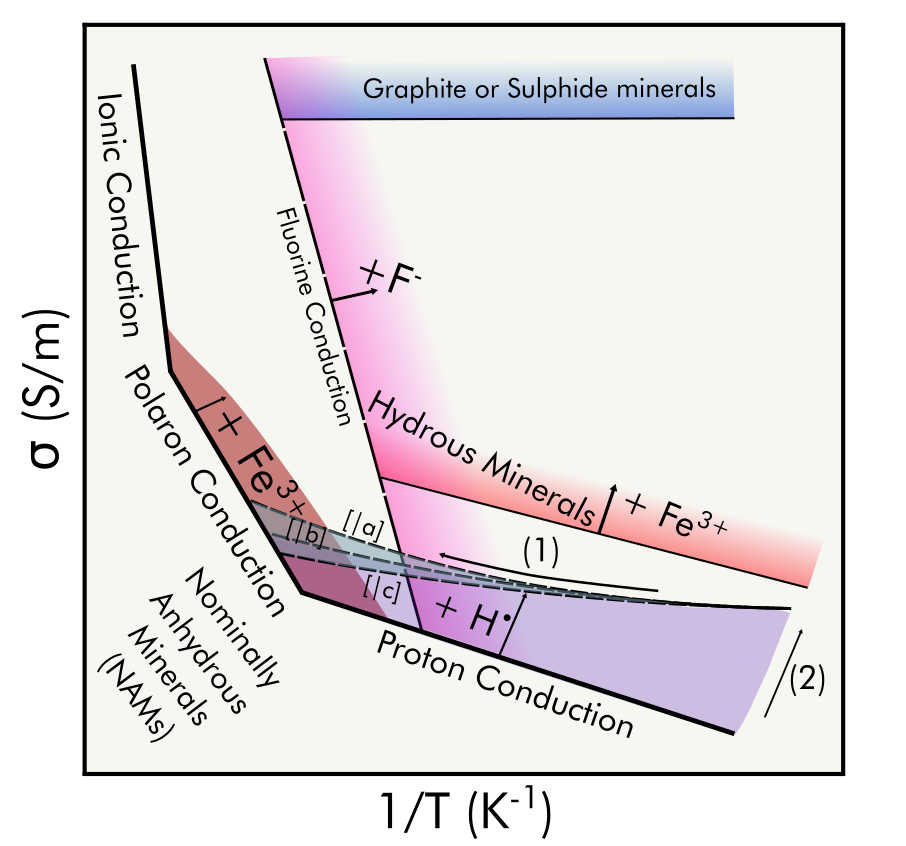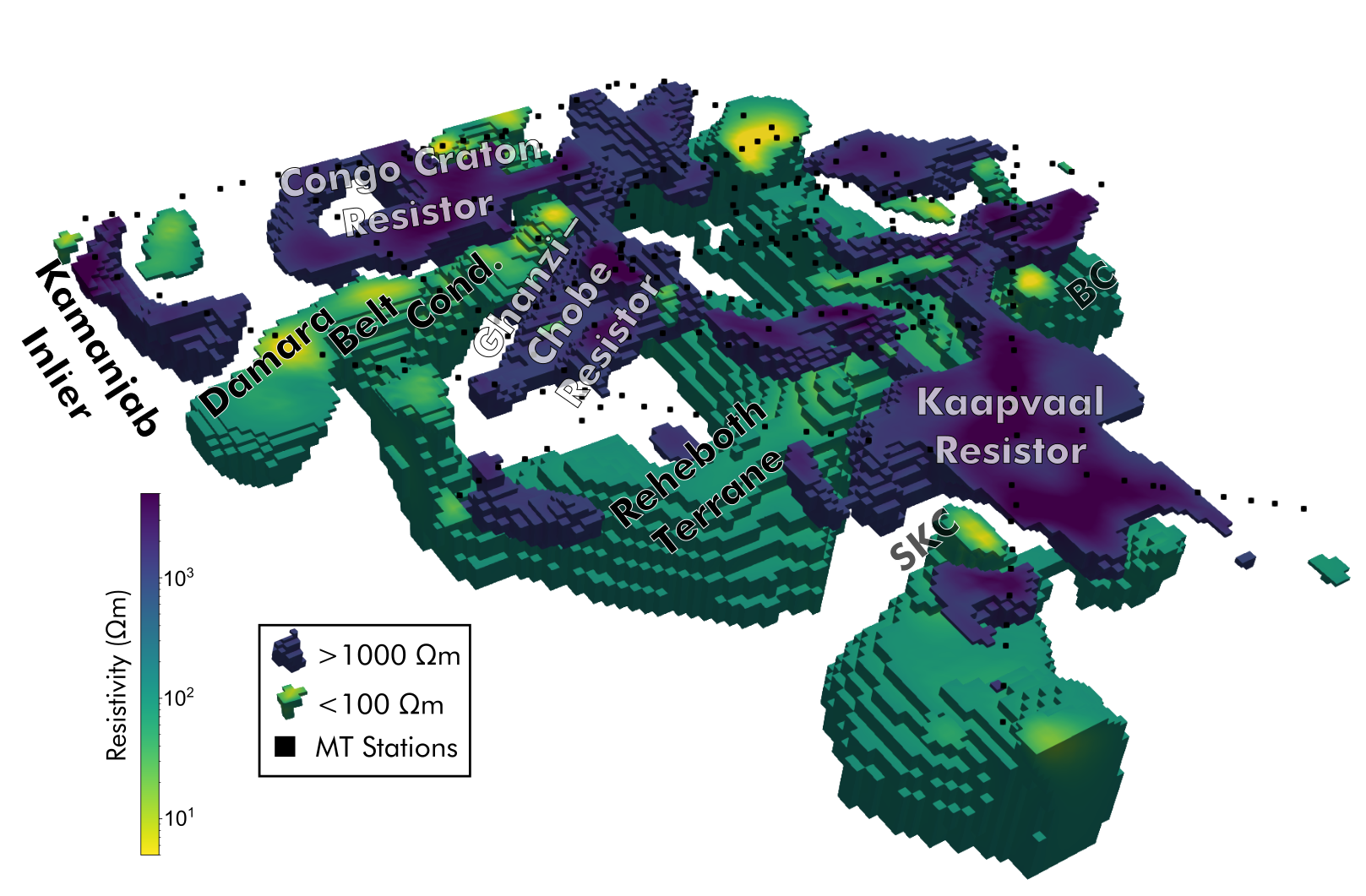Magnetotelluric models and their quantified interpretations
Magnetotellurics is a passive-sourced electromagnetic geophysical method used to map the electrical conductivity variations of the subsurface. Because electrical conductivity is sensitive to the many physical and chemical properties of rock-forming materials, it can be used to decipher the many problems relevant to understanding Earth-systems. These problems can be small-scale engineering problems such as constraining the spatial extents of a geothermal region or lithospheric-scale problems relevant to the nature of plate tectonics.

Depiction of different semi-conduction mechanisms of minerals exist in the mantle.
The electrical conductivity of a medium can differ for many reasons. These can be saline fluids and melts that exist within interconnected fracture zones or intrinsic properties of rocks reflecting certain impurities that carry electrons. All of these processes have different rates of temperature dependencies, which can be altered if the composition of the material is different. Most minerals at room temperature are incredibly low conductivity. With increasing temperature, different semi-conduction mechanisms start to dominate, such as the iron-dependent polaron conduction and water (structurally bound hydrogen) dependent proton conduction.
Revealing the relationships between mantle composition, tectonomagmatic history and electrical conductivity in Southern African lithosphere.

3D contour plot for values ≤1000 Ωm and ≥100 Ωm. BCC: Bushveld Complex Conductor, SKC: Southern Kaapvaal Conductor.